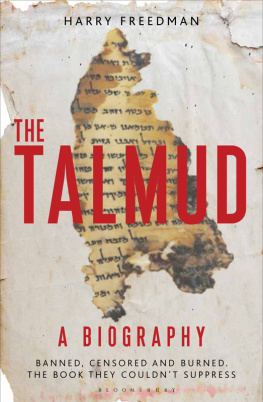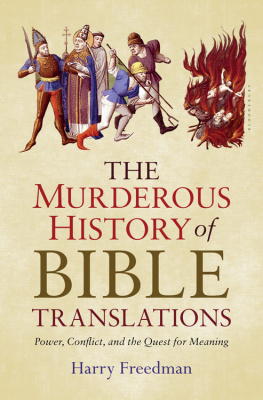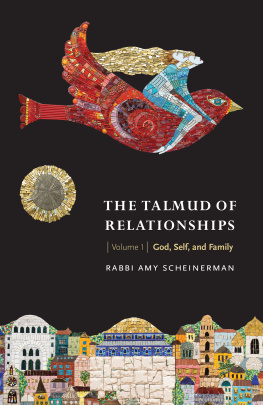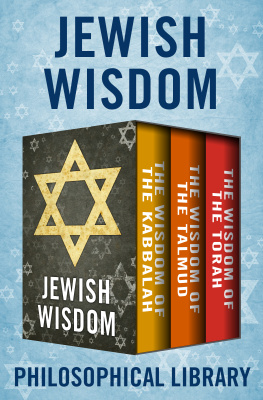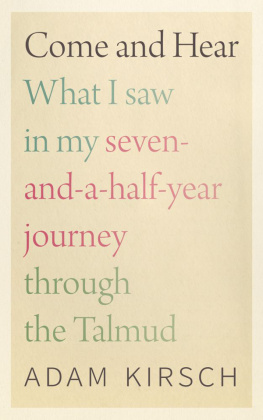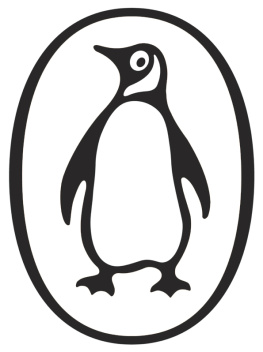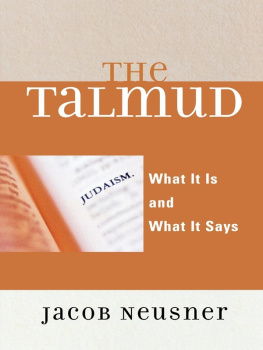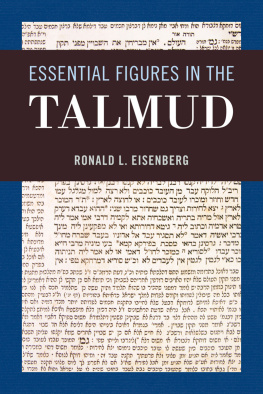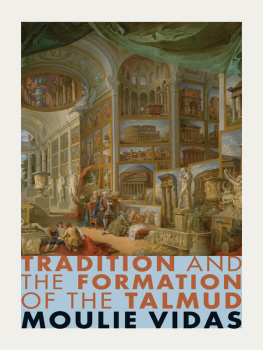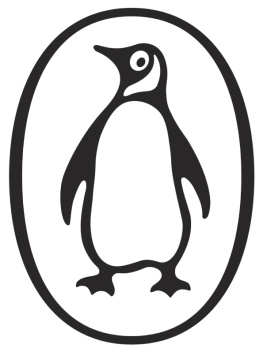The Talmud
A Biography
The Talmud
A Biography
Banned, Censored and Burned.
The book they couldnt suppress
Harry Freedman

First published in Great Britain 2014
Copyright Harry Freedman, 2014
The moral right of the author has been asserted
No part of this book may be used or reproduced in any manner whatsoever without written permission from the Publisher except in the case of brief quotations embodied in critical articles or reviews. Every reasonable effort has been made to trace copyright holders of material reproduced in this book, but if any have been inadvertently overlooked the Publishers would be glad to hear from them.
A Continuum book
Bloomsbury Publishing Plc
50 Bedford Square
London WC1B 3DP
www.bloomsbury.com
Bloomsbury is a registered trademark for Bloomsbury Publishing Plc
Bloomsbury Publishing, London, New Delhi, New York and Sydney
A CIP record for this book is available from the British Library.
ISBN 978-1-4729-0595-6
10 9 8 7 6 5 4 3 2 1
Typeset by Fakenham Prepress Solutions, Fakenham, Norfolk NR21 8NN
Contents
Harry Freedman has a doctorate in the ancient Aramaic translation of the Bible. His previous books include aren.
You can read more about the Talmud, including selected passages, at www.talmudbiography.com.
This is the story of a book. A book which defines the religion of the Jews. A book which, arguably, defines the Jews themselves.
Most books dont have their own story, at best they have a narrative about their publishing history and subsequent reception by the public. But the Talmud has more than just a story, it has a turbulent history. One which, in many ways, parallels the history of the Jewish people.
The Talmud was composed as a record of discussions amongst scholars and sages in the ancient Jewish diaspora, in towns and villages close to Baghdad. As the Jews dispersed across the world, the Talmud went with them, travelling along trade and migratory routes into the Maghreb, Europe, Arabia and the East. It became the foundation of the Jewish legal system, the bedrock of the Jewish faith. It became more important to the Jews than the Bible itself.
The Jews dwelt amongst many cultures. They exchanged perspectives and ideas with their neighbours. Early contacts between Judaism and Islam produced an intense, intellectual cross-fertilization, the effects of which can still be discerned in Talmudic and Islamic law. The medieval encounter between the Jews and Christianity was less benign, the Church regarded the Talmud as the obstacle which prevented them from converting the Jews. Their response was to challenge, burn, ban and censor it.
Later generations, particularly in Protestant Europe, although just as intent on converting the Jews nevertheless explored the Talmud for ideas. We find philosophers and poets, republicans and kings, priests and professors all probing the Talmud, seeking inspiration, support or validation for their particular points of view.
The most intractable of the Talmuds challenges came from the Jews themselves. Rejectionists, messianic pretenders and savants vilified it, seeking to delegitimize or at the very least to minimize its influence. But like the Jews themselves, the Talmuds capacity for survival is boundless. Today it is studied by more people than at any time in its history.
From one perspective the Talmuds story is a history of the Jews. From another, it is a window onto the development of world civilization. The history of the Talmud is a testament to what can happen, for better and for worse, when the literature of one culture comes into contact, or conflict, with the beliefs and values of another. Conversely, it illustrates the consequences for a self-contained, inward-looking society when its defining texts are confronted by new ideas from the outside.
The Talmud is a classic of world literature. Its a massive, ancient and seemingly impenetrable work. People devote their lives to studying it. But you are not reading a book about what is in the Talmud. This is the story of what happened to the Talmud, and the role it has played in world history, religion and culture. Its not a book for experts, or for specialists. Its a book for anyone who wants to know the story of one of the great classics of ancient literature, albeit one which is far less heavily thumbed, outside of Jewish circles, than Homer, Chaucer or Ovid. The content of the Talmud may be esoteric. But its history belongs to us all. For there is scarcely a square inch of the worlds surface upon which its story was not, at some time, acted out.
What is The Talmud?
Every nation has its laws. Few nations systematically record the process, the philosophical discussions and legal arguments, which led to those laws. Everybody knows the laws are there for a reason. But the reasons dont make much difference to the everyday life of most people.
The Jews are different. As much value is attached to studying the process by which their laws emerged as to an awareness of the laws themselves. Indeed, studying them is said to be more important than keeping them. Because studying them leads to keeping them.
The Jews are known as the People of the Book. But actually they are the people of the Two Books. The earlier book, the Hebrew Bible is considered the sacred, revealed word of God. But the later book, the man-made Talmud, is the more significant for understanding Judaism.
The Hebrew Bible, or Old Testament, is the foundation of the Jewish religion. It is the basis of Jewish belief and the origin of its ethics, rituals and social legislation. But the Bible deals in concepts, principles and generalities; it rarely pronounces upon its injunctions in detail. The Talmud is a record of the discussions that took place over several centuries, which took the principles laid down in the Bible and gave the religion its form and shape.
There is much in the Bible that has been irrelevant to religious practice for at least two thousand years. Including the system of sacrifices, the treatment of an unknown illness incorrectly referred to as leprosy and many of the agricultural laws. Conversely, the Talmud contains vast amounts of material that may be based on the Bible but is not immediately evident in it. Including discussions on the governance and regulation of society, the practical performance of religious rituals, family relationships and contract and monetary law. It also contains much that is not in the Bible. Medicine, astronomy, folklore, magic, sex and humour, to mention just a few.
The Talmud (the word means study, or teaching) defines the Jewish religion. Adin Steinsaltz, perhaps the greatest commentator on the Talmud of our age, describes it as the central pillar supporting the entire spiritual and intellectual edifice of Jewish life. Its not an easy book. It is an exquisitely complex, highly logical and frequently impenetrable work. For most of its history studying the Talmud has been regarded by the Jews as an intellectual exercise in its own right. An exercise which, since it leads the student to the essence of human knowledge and experience, confers profound spiritual benefit.
The Talmud is a massive work. It contains one million, eight hundred thousand words spanning thirty seven volumes. Although it is concerned with law, it is not a law code. It is a record of discussions that took place in academies in Babylon between the third and fifth centuries, discussions that were based on a book called the Mishnah, a second to third-century codification of Jewish law.

